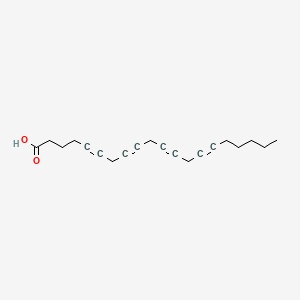| De Vleesschauwer D et al. |
Abscisic acid-induced resistance against the brown spot pathogen Cochliobolus miyabeanus in rice involves MAP kinase-mediated repression of ethylene signaling. |
2010 |
Plant Physiol. |
pmid:20130100
|
| Moraes LA et al. |
Non-genomic effects of PPARgamma ligands: inhibition of GPVI-stimulated platelet activation. |
2010 |
J. Thromb. Haemost. |
pmid:20040043
|
| Taheri P and Tarighi S |
Riboflavin induces resistance in rice against Rhizoctonia solani via jasmonate-mediated priming of phenylpropanoid pathway. |
2010 |
J. Plant Physiol. |
pmid:19729221
|
| Guyton KZ et al. |
A reexamination of the PPAR-alpha activation mode of action as a basis for assessing human cancer risks of environmental contaminants. |
2009 |
Environ. Health Perspect. |
pmid:20049115
|
| Lee YS |
Arachidonic Acid Activates K-Cl-cotransport in HepG2 Human Hepatoblastoma Cells. |
2009 |
Korean J. Physiol. Pharmacol. |
pmid:19915704
|
| Ren Y et al. |
Possible mediators of connecting tubule glomerular feedback. |
2009 |
Hypertension |
pmid:19047578
|
| Fukuzawa K et al. |
Measurement of lipid hydroperoxides by the ferric-xylenol orange method (2) application to lipoxygenase assay. |
2009 |
J. Nutr. Sci. Vitaminol. |
pmid:19352069
|
| Gu H et al. |
Modulation of muscle rNaV1.4 Na+ channel isoform by arachidonic acid and its non-metabolized analog. |
2009 |
J. Cell. Physiol. |
pmid:19097141
|
| Ratz PH et al. |
Calcium-independent phospholipase A2 participates in KCl-induced calcium sensitization of vascular smooth muscle. |
2009 |
Cell Calcium |
pmid:19487023
|
| Gao L et al. |
Imbalance of angiotensin type 1 receptor and angiotensin II type 2 receptor in the rostral ventrolateral medulla: potential mechanism for sympathetic overactivity in heart failure. |
2008 |
Hypertension |
pmid:18768398
|
